Have you ever dreamed of exploring the rich history, stunning architecture, and breathtaking landscapes of Germany? This article is here to guide you through 25 of the most spectacular and famous landmarks in Germany.
Germany is a treasure trove of cultural and historical wonders, with each of the famous German landmarks telling its own unique story. Whether you’re an architecture enthusiast, a history buff, or simply someone who loves beautiful scenery, Germany has something special for you.
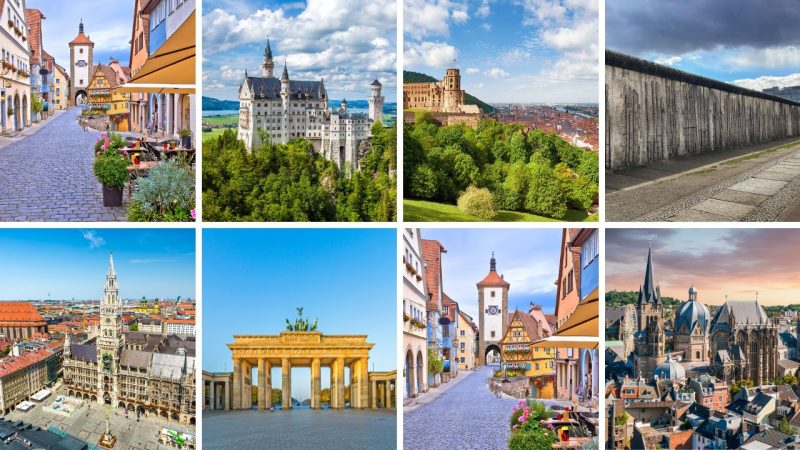
From the majestic castles and fortresses to vibrant cities and picturesque villages, there is no shortage of amazing places to discover, and there is sure to be many Germany famous landmarks that you already know.
Below, join me on a journey through Germany’s most famous landmarks of Germany. Let’s dive into the beauty and wonder of these famous Germany landmarks that have fascinated visitors from around the world for centuries.
Love Germany? Click here to download your free guide to ALL of Germany’s Amazing UNESCO sites. See all 52 of them!
Don’t miss the best hotel savings in Germany here >>
25 Spectacular & Famous Landmarks In Germany That You’ll Fall In Love With
Here are all the answers to “what are some famous landmarks in Germany”… 🥰
1. Neuschwanstein Castle, Bavaria
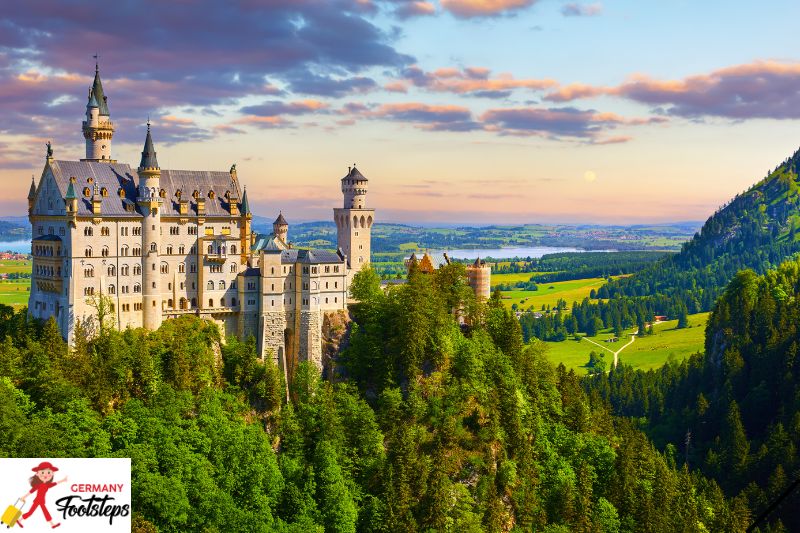
Neuschwanstein Castle, located in the Bavarian Alps, is a 19th-century Romanesque Revival palace renowned for its enchanting, fairytale-like appearance.
Commissioned by King Ludwig II of Bavaria, the castle was intended as a personal retreat and a homage to medieval knights and the operatic works of Richard Wagner. The structure features ornate towers, whimsical turrets, and a majestic grand hall adorned with vibrant murals depicting scenes from Wagner’s operas.
Inside, visitors can marvel at the opulent King’s bedroom, the resplendent throne room, and the impressive Singers’ Hall.
The castle’s breathtaking setting, surrounded by the stunning natural beauty of the Bavarian Alps, offers magnificent views, making it a favorite destination for both history enthusiasts and nature lovers.
If you want to know the answer to what is the most famous landmark in Germany? I think this is definitely is along with another Germany landmark coming up soon!
Click here to read my full guide to Neuschwanstein Castle.
2. Brandenburg Gate, Berlin
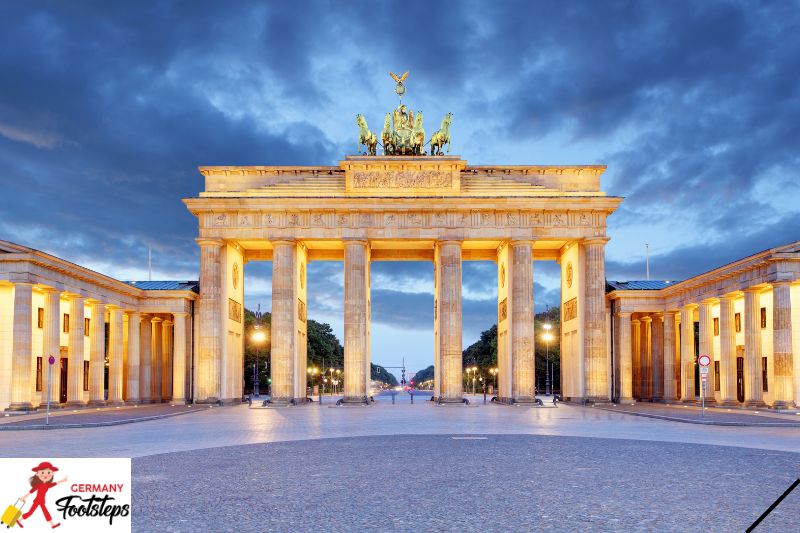
The Brandenburg Gate is an iconic neoclassical monument in Berlin that has played a significant role in the city’s history.
Constructed in the late 18th century as a grand entrance to the city, it has witnessed many pivotal events, including Napoleon’s arrival and the fall of the Berlin Wall.
During the Cold War, the gate stood near the Berlin Wall and symbolized the division between East and West Berlin. Its iconic structure consists of 12 Doric columns, creating five open passageways.
After the fall of the Berlin Wall in 1989, it became a symbol of German reunification and continues to be a site of major cultural and historical importance, visited by millions annually.
If you’re looking for Berlin Germany famous landmarks, this is where to head.
Click here to read my full guide to Berlin.
3. Cologne Cathedral, Cologne
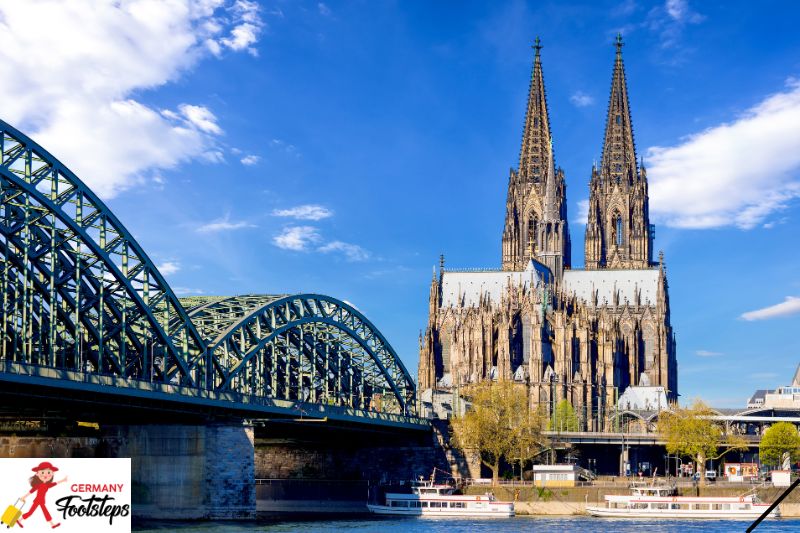
Cologne Cathedral is a UNESCO World Heritage Site and Germany famous landmark celebrated for its breathtaking Gothic architecture and towering twin spires.
The construction of this architectural marvel began in the 13th century and spanned over 600 years. Its intricate facade, adorned with detailed sculptures and vast stained glass windows, is a testament to the artistry of the Gothic period.
Inside, visitors are greeted by impressive vaulted ceilings, a monumental choir, and an array of religious artifacts. The twin spires, rising over 157 meters, dominate Cologne’s skyline.
The cathedral not only serves as a place of worship but also houses a rich treasury of relics and artworks leading to its status as a symbol of the city’s historical and religious heritage.
Click here to read my full guide to Cologne.
4. Heidelberg Castle, Heidelberg
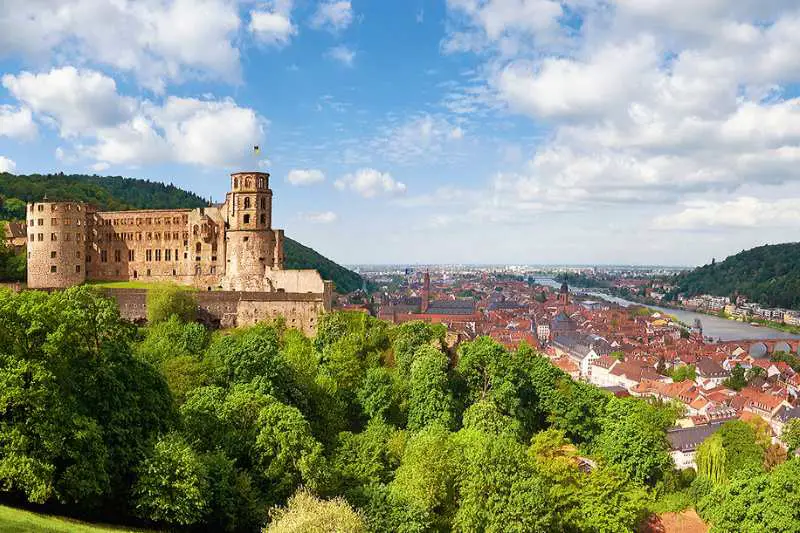
Perched above the Neckar River, Heidelberg Castle is a stunning example of Renaissance architecture mixed with medieval elements and is one of the most popular landmarks in Germany.
Originally built in the 13th century as a fortress, it later became the residence of the Electors Palatine. The castle has endured numerous phases of destruction, including a fire in 1693, giving it its current romantic, partially ruined appearance.
Despite its damage, Heidelberg Castle remains a visual and cultural gem, offering panoramic views over the city and river. The castle’s extensive ruins include majestic courtyards, defense towers, and the famed Great Barrel, a colossal wine cask.
Its historical significance and dramatic setting continue to attract historians, tourists, and architectural enthusiasts.
Click here to read my full guide to Heidelberg.
5. Berlin Wall, Berlin
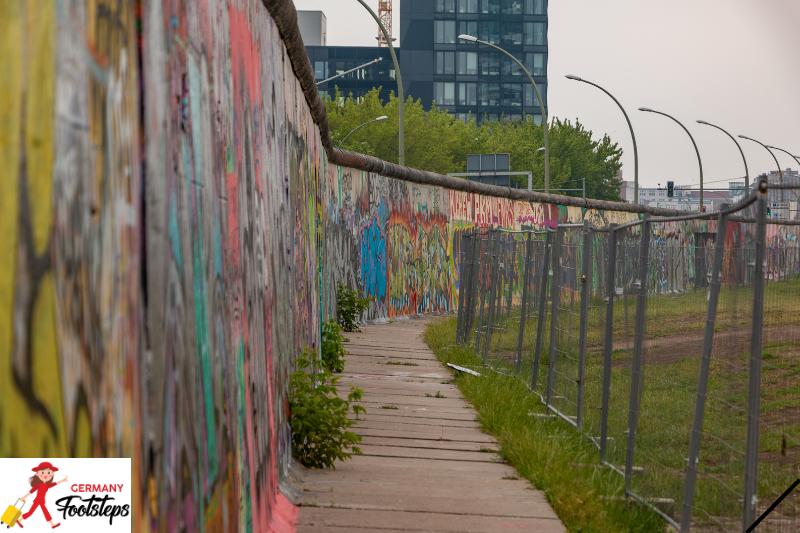
The most famous of Berlin Germany landmarks, the Berlin Wall serves as a powerful emblem of the Cold War era and the division between East and West Germany.
Erected in 1961, it stood as a literal and ideological barrier for nearly 30 years, separating families and communities.
Since then, the wall became a canvas for artistic expression, especially the East Side Gallery, which is now an open-air memorial featuring murals by artists worldwide. These murals express themes of freedom, hope, and peace.
The fall of the Berlin Wall in 1989 was a momentous event, symbolizing the end of the Cold War and the reunification of Germany. Today, preserved sections of the wall and its accompanying exhibitions attract visitors who seek to understand and reflect on this pivotal historical period.
If you want to visit the most famous landmarks in Germany, this is definitely at #1.
Click here to read my full guide to Berlin.
6. Zugspitze, Bavaria
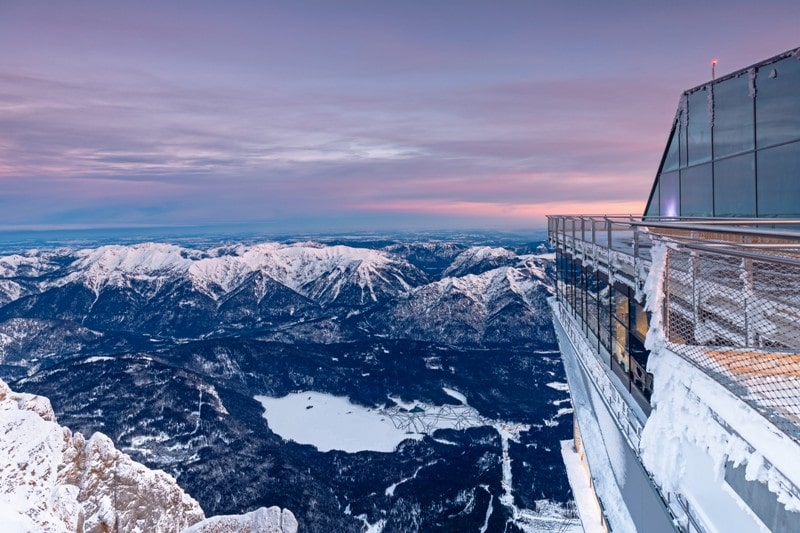
Zugspitze, the highest peak in Germany at 2,962 meters, is a haven for nature enthusiasts and adventure seekers. Located in the Bavarian Alps, it offers stunning panoramic views extending across four countries on clear days.
Visitors can ascend to the summit via cable car or cogwheel train, enjoying breathtaking vistas en route. The area is popular for its diverse recreational activities, including hiking on various trails, mountaineering, and in winter, skiing and snowboarding.
The Zugspitze summit features a restaurant and a weather station, providing a unique experience at Germany’s rooftop. Its year-round appeal makes Zugspitze a top destination for both outdoor sports and leisurely scenic enjoyment and is a must-visit if you want to see German famous landmarks.
7. Rhine Valley
The Rhine Valley is one of Germany’s most picturesque and historically rich regions, stretching along the mighty Rhine River (which is definitely one of the natural landmarks in Germany).
Renowned for its scenic beauty, the valley is a tapestry of rolling vineyards, lush hills, and enchanting castles that harken back to medieval times. Visitors are captivated by the sight of majestic fortresses like Marksburg and Rheinfels, which stand as testaments to the region’s fascinating past.
The Rhine Valley is also a major wine-producing area, offering some of the finest Riesling wines in Germany. Cruises along the river provide an idyllic way to explore the area, revealing a landscape dotted with charming villages and terraced vineyards, making it a UNESCO World Heritage Site.
Whether you’re interested in history, wine tasting, or simply soaking in the scenic views, the Rhine Valley offers a quintessentially German experience that leaves a lasting impression.
Click here to read my full guide to Rhine Valley.

8. Black Forest, Baden-Württemberg
The Black Forest, or Schwarzwald, is a legendary region in southwestern Germany known for its dense forests, charming villages, and cultural traditions such as cuckoo clocks.
This picturesque area offers numerous opportunities for outdoor activities like hiking, cycling, and cross-country skiing, with trails that meander through lush woodlands, pristine lakes, and rolling hills.
The region is also famous for its quaint towns featuring traditional half-timbered houses, such as Triberg and Schönwald.
Visitors can enjoy local delicacies, including Black Forest cake and schnapps. The Black Forest’s idyllic landscape and rich folklore make it a serene and culturally rich destination for nature lovers and those seeking a quintessentially German experience at a famous landmark of Germany.
Click here to read my full guide to Black Forest.
9. Sanssouci Palace, Potsdam
Sanssouci Palace in Potsdam is a splendid example of 18th-century Rococo architecture, built as the summer residence of Frederick the Great, King of Prussia. The name “Sanssouci,” translating to “without worries,” reflects its purpose as a place of leisure and relaxation.
The palace delights visitors with its ornate decorations, pastel colors, and airy design. Surrounding the palace, the expansive gardens are masterpieces of landscape architecture, featuring terraces, fountains, and sculptures.
Notable highlights include the grand Picture Gallery, the Chinese House, and the New Chambers. Offering insights into the opulence of Prussian royalty, Sanssouci rivals even the grandeur of France’s Versailles which is why it’s become one of the major landmarks in Germany.
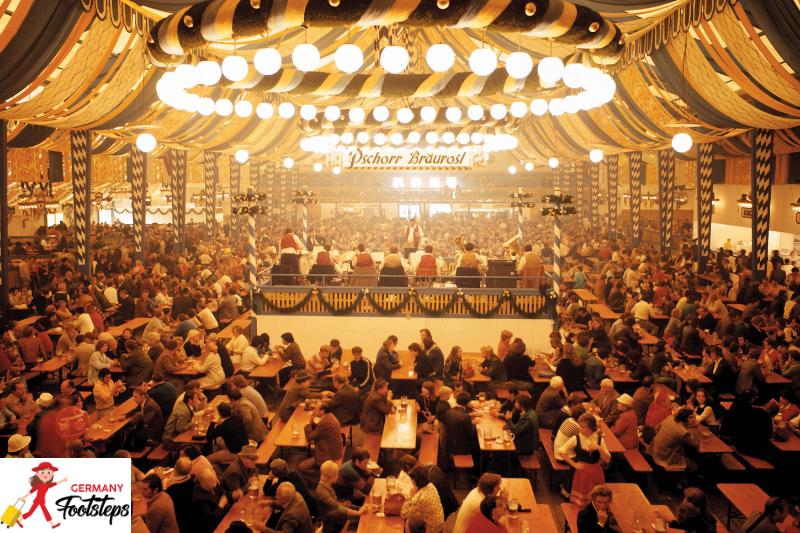
10. Oktoberfest, Munich
Oktoberfest, held annually in Munich, is the world’s largest and most famous beer festival, drawing millions of attendees from across the globe. This festive celebration of Bavarian culture kicks off with the ceremonial tapping of the first keg by Munich’s mayor.
The festival features numerous large beer tents, each showcasing different breweries and offering a unique atmosphere filled with traditional music, dancing, and hearty Bavarian fare.
Visitors can savor specialties like pretzels, bratwurst, and roast chicken, all accompanied by steins of locally brewed beer.
Beyond the beer tents, Oktoberfest also includes carnival rides, parades, and cultural displays, making it a vibrant and multifaceted event and one of the important landmarks in Germany.
Click here to read my full guide to Oktoberfest.
11. Aachen Cathedral, Aachen
Aachen Cathedral is one of Europe’s oldest and most revered churches, notable for its distinctive blend of Carolingian and Gothic architecture.
Built in the 8th century under the reign of Charlemagne, the cathedral served as the coronation site for German kings and as Charlemagne’s final resting place. The Palatine Chapel, at the heart of the cathedral, is an architectural masterpiece featuring intricate mosaics, marble-paneled walls, and a stunning octagonal design.
Over the centuries, various additions have enhanced the structure, including the Gothic choir and numerous chapels. Today, Aachen Cathedral stands as a UNESCO World Heritage Site, attracting visitors keen to explore its rich historical and artistic legacy.
If you’re looking for historical landmarks in Germany, this is one of the best.
Click here to read my full guide to Aachen.

12. Rothenburg ob der Tauber, Bavaria
Rothenburg ob der Tauber is a picturesque medieval town located in Bavaria, offering a well-preserved glimpse into Germany’s past. Known for its cobblestone streets, half-timbered houses, and towering town walls, Rothenburg evokes a fairy-tale atmosphere.
The town’s medieval architecture has been meticulously maintained, with many buildings dating back to the 14th and 15th centuries.
Visitors can explore notable landmarks such as the impressive Town Hall, the towering St. Jacob’s Church, and the captivating Medieval Crime Museum.
Walking along the town walls provides stunning views of the surrounding landscape. Rothenburg’s historical charm and quaint ambiance make it a beloved destination for anyone looking for historic landmarks in Germany and casual tourists alike.
Click here to read my full guide to Rothenburg.
13. Reichstag Building, Berlin
Another of the famous landmarks in Berlin Germany, the Reichstag is known for its modern glass dome, which offers panoramic views of Berlin. It’s home to the German Parliament.
Designed by British architect Norman Foster, the dome was added during the building’s renovation in the 1990s. Visitors can ascend the dome via a spiral ramp, enjoying a 360-degree view of the city.
The Reichstag Building itself is a historical landmark, originally constructed in the late 19th century and serving as the seat of the German Empire. It was heavily damaged during World War II but was meticulously restored after German reunification.
The building’s architectural blend of historical grandeur and modern innovation makes it a symbol of Germany’s past and present.
Click here to read my full guide to Berlin.
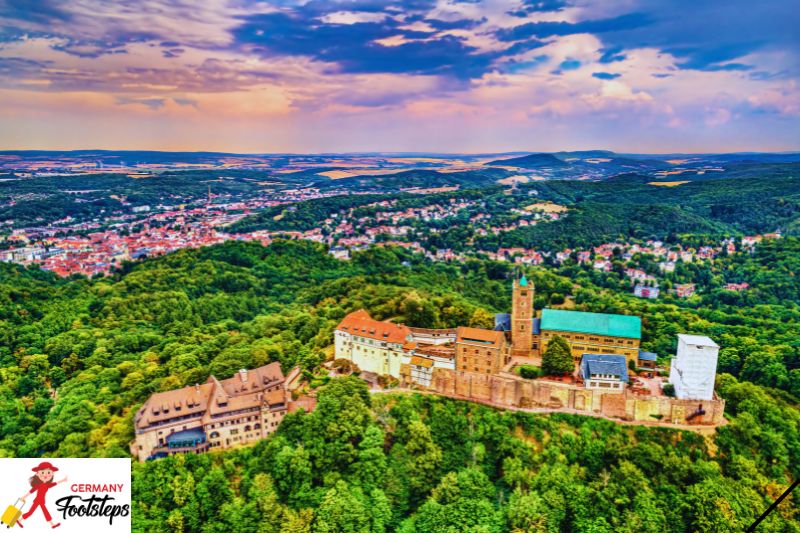
14. Wartburg Castle, Thuringia
Famed for its association with Martin Luther, who translated the New Testament here, Wartburg Castle is a UNESCO World Heritage site with splendid views and is definitely one of the German historical landmarks.
Located in the Thuringian Forest, the castle dates back to the 11th century and has served as a fortress, a residence for various rulers, and a center of learning. Luther sought refuge in the castle in 1521, where he translated the New Testament into German, a pivotal moment in the Protestant Reformation.
The castle’s impressive architecture includes a grand courtyard, a chapel, and a knight’s hall, offering a glimpse into medieval life. Its historical significance and scenic setting make it a popular destination for history buffs and those seeking a glimpse into Germany’s rich past.
Click here to read my full guide to Wartburg Castle.
15. Frauenkirche, Dresden
This one of the famous landmarks Germany is a stunning Baroque church, rebuilt after WWII. It symbolizes peace and reconciliation with its remarkable architecture and history.
The Frauenkirche, meaning “Church of Our Lady,” was originally built in the 18th century and was destroyed during the Allied bombing of Dresden in 1945. After the fall of the Berlin Wall, efforts began to rebuild the church, a project that was completed in 2005.
The reconstructed Frauenkirche is a testament to the resilience of the city and its people. Its distinctive dome, intricate facade, and the surrounding park make it a prominent landmark in Dresden.
The church also serves as a reminder of the horrors of war and the importance of peace and reconciliation.
Click here to read my full guide to Dresden.

16. Mercedes-Benz Museum, Stuttgart
This landmark of Germany showcases the extensive and fascinating history of the Mercedes-Benz brand, from the invention of the automobile to the present day. Located in Stuttgart, the birthplace of Mercedes-Benz, the museum is housed in a striking, futuristic building designed by UNStudio.
Visitors can explore the evolution of the automobile through a chronological display of iconic vehicles, including early models, racing cars, and luxury sedans. The museum also takes a look at the technical innovations and design philosophies that have shaped the Mercedes-Benz brand.
Its interactive exhibits, multimedia displays, and engaging storytelling make it a captivating experience for car enthusiasts and anyone interested in the history of transportation.
Click here to read my full guide to Stuttgart.
17. Lake Constance, Baden-Württemberg/Bavaria
Shared with Austria and Switzerland, Lake Constance is known for its picturesque beauty, water activities, and charming lakeside towns.
The largest lake in Germany, Lake Constance, or Bodensee, is a popular destination for outdoor recreation and relaxation. Visitors can enjoy sailing, kayaking, and swimming in its clear waters.
The surrounding region features charming towns such as Konstanz, Lindau, and Meersburg, each with its own unique character and attractions.
The lake’s scenic beauty, with its snow-capped Alps in the background, makes it a perfect spot for hiking, cycling, and simply enjoying the natural surroundings.
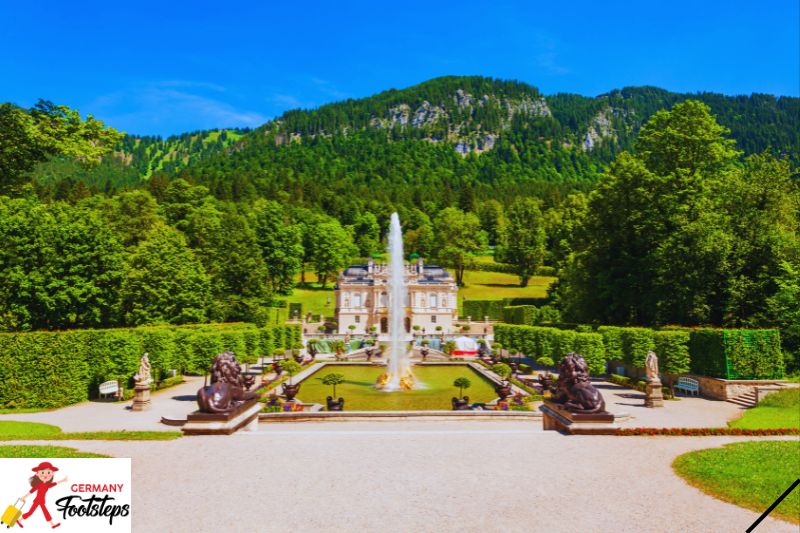
18. Linderhof Palace, Bavaria
Inspired by the Palace of Versailles, Linderhof is the smallest of King Ludwig II’s palaces but is renowned for its opulent interiors and splendid gardens. Situated in the Bavarian Alps, Linderhof was built in the late 19th century as a private retreat for King Ludwig II.
This landmark Germany offers features ornate decorations, including gilded furniture, elaborate chandeliers, and intricate murals. The surrounding gardens are a masterpiece of landscape design, featuring fountains, grottos, and a Moorish pavilion.
Linderhof offers a glimpse into the extravagant tastes and artistic vision of King Ludwig II, making it a popular destination for those interested in German history and architecture.
19. Dachau Concentration Camp
The Dachau Concentration Camp, situated near Munich, Germany, holds a poignant place in history as the first Nazi concentration camp established in March 1933.
Dachau operated for 12 years, becoming a prototype for subsequent camps and a site of horrific suffering and death during the Holocaust. Thousands of people, including Jews, political prisoners, and other persecuted groups, were imprisoned, subjected to forced labor, medical experiments, and execution.
Since its liberation in 1945, Dachau has been preserved as a memorial site and museum, dedicated to honoring the memory of the victims and educating future generations about the atrocities committed by the Nazi regime.
Visitors can tour the original buildings, see stark exhibits, and reflect on the tragic history that unfolded within its walls.

20. Marienplatz, Munich
The central square in Munich, Marienplatz is a famous landmark in Germany thanks to its historical buildings, including the New Town Hall with its animated Glockenspiel.
Marienplatz is the heart of Munich, a bustling square surrounded by historic buildings and lively cafes. The most prominent structure is the New Town Hall, a magnificent example of Gothic Revival architecture.
The highlight of the New Town Hall is the animated Glockenspiel, a clock tower that features a series of moving figures depicting scenes from Munich’s history. Every day at 11am, 12pm, and 5pm, the Glockenspiel plays a melody and the figures come to life, captivating visitors with their colorful performance.
Click here to read my full guide to Munich.
21. Königssee, Bavaria
This serene alpine lake is famed for its crystal-clear waters and stunning mountainous scenery, perfect for boating and photography. Königssee, meaning “King’s Lake,” is a pristine alpine lake nestled in the Bavarian Alps.
Its crystal-clear waters reflect the surrounding mountains, creating breathtaking views. The lake is known for its tranquility and its unique ecosystem, home to a variety of fish and birds.
Visitors can enjoy boat tours on the lake, with electric boats used to preserve the lake’s pristine environment. The lake’s serene atmosphere and stunning scenery make it a popular destination for nature lovers and photographers.
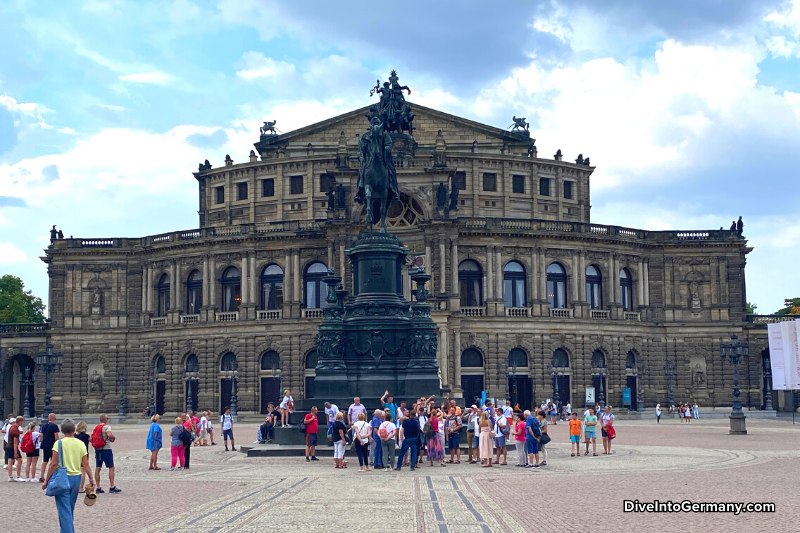
22. Dresden Semperoper, Dresden
An architectural and artistic gem, the Semperoper is one of the most renowned opera houses in the world with a rich cultural history. The Semperoper, or Semper Opera House, is a magnificent example of Neo-Renaissance architecture, built in the 19th century.
The opera house is renowned for its opulent interior, featuring intricate decorations, gilded balconies, and a grand chandelier. The Semperoper has a long and distinguished history, hosting world-class performances by renowned opera singers and orchestras.
Its architectural beauty and cultural significance make it a landmark of Dresden and a symbol of German artistic heritage.
Click here to read my full guide to Dresden.
23. Hamburg Harbor, Hamburg
Known as the “Gateway to the World,” Hamburg Harbor is a major international port that offers tours, museums, and a bustling atmosphere. Hamburg Harbor is one of Europe’s busiest ports, a bustling hub of activity.
Visitors can take harbor tours to witness the impressive array of ships, cranes, and warehouses. The harbor is also home to several museums, including the International Maritime Museum and the Hamburg Dungeon.
The harbor’s lively atmosphere, with its mix of historical buildings, modern infrastructure, and bustling activity, makes it a fascinating destination for those interested in maritime history and urban exploration.
Click here to read my full guide to Hamburg.
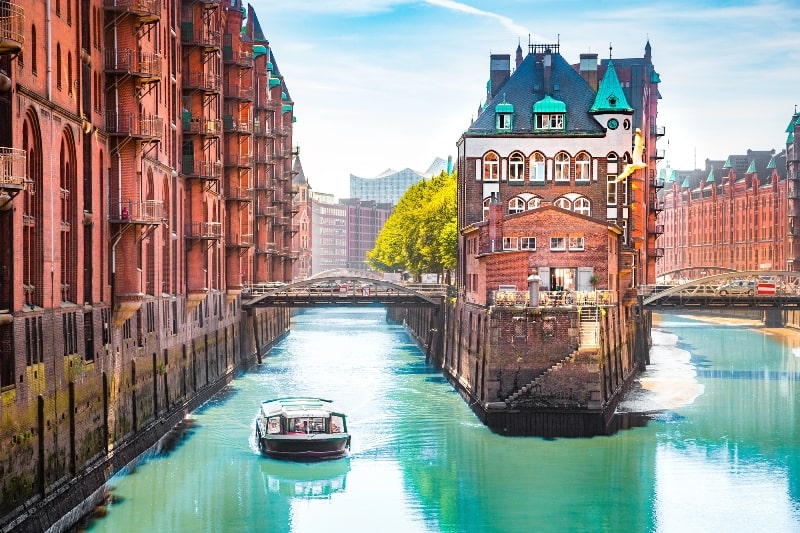
24. Nuremberg Castle, Nuremberg
This historical landmark consists of medieval fortifications that provide a glimpse into the rich past of Nuremberg and afford great views over the city.
Nuremberg Castle, perched on a hill overlooking the city, is a complex of medieval fortifications dating back to the 11th century. The castle includes a palace, a chapel, and a series of towers and walls.
Visitors can explore the castle’s courtyards, climb its towers for panoramic views of Nuremberg, and learn about its history as a royal residence and a center of power.
The castle’s impressive architecture and its strategic location make it a prominent landmark of Nuremberg and a testament to the city’s rich past.
Click here to read my full guide to Nuremberg.
25. Europa-Park, Rust
Germany’s largest theme park, Europa-Park offers fun for all ages with its many rides, shows, and themed areas representing different European countries. Europa-Park is a sprawling theme park located in Rust, near the French border.
The park features a variety of rides, shows, and attractions, each themed around different European countries. Visitors can experience roller coasters, water rides, and live shows, all set against a backdrop of European architecture and culture.
Europa-Park is a popular destination for families and thrill-seekers, offering a fun and immersive experience for visitors of all ages.
Click here to read my full guide to Europa Park.

In exploring these 25 famous German landmarks, we took a journey through the nation’s rich tapestry of history, culture, and architectural prowess. Each landmark, from medieval castles to modern marvels, offers a glimpse into Germany’s multifaceted past and dynamic present, reflecting the country’s resilience and ingenuity.
Looking for more great spots in Germany? Find our guide to all 52 UNESCO sites here and the most beautiful places in Germany here. You can also find all our guides to planning a trip to Germany here.
